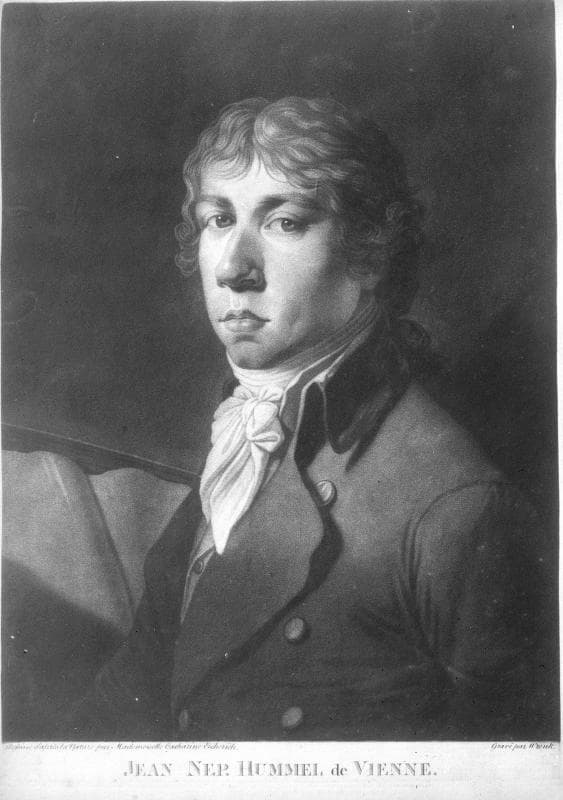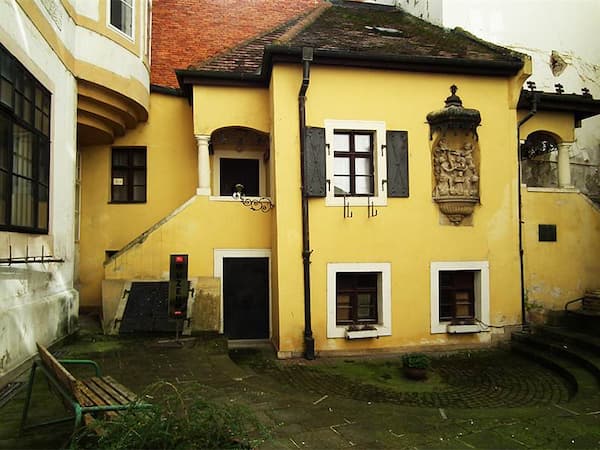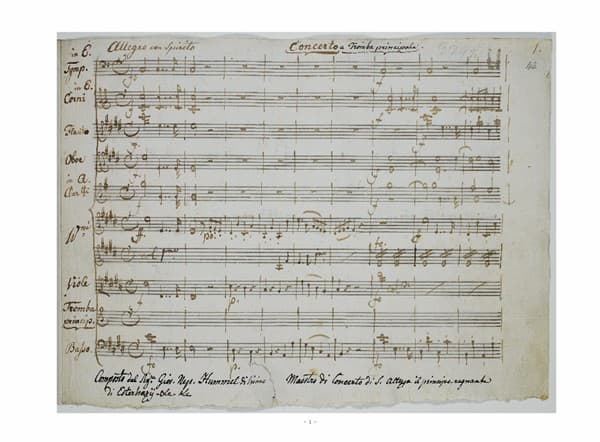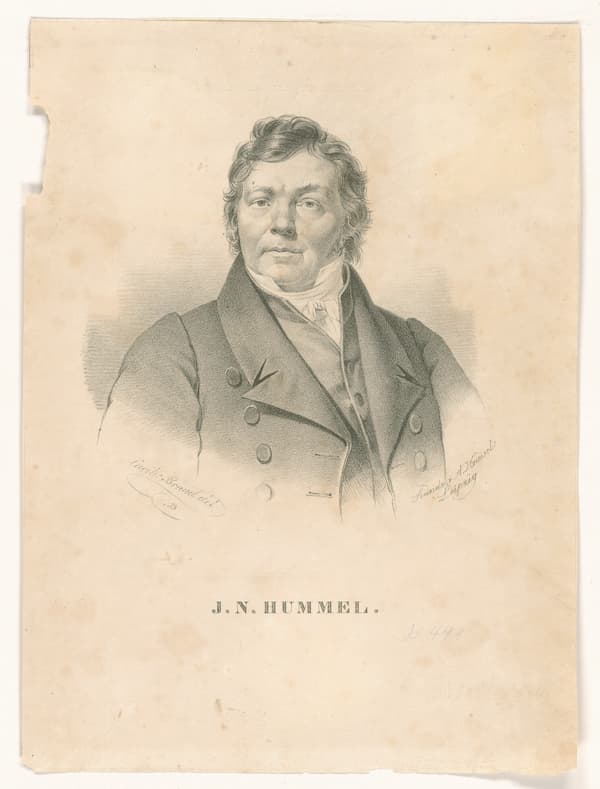During his time, Johann Nepomuk Hummel was considered to be one of Europe’s greatest composers and greatest pianists. He was Mozart’s most famous student, a protégé of Joseph Haydn, and Beethoven’s friend and chief competitor. With his forward-looking compositions, he also exerted a powerful influence on the next generation of composers, most famously Schubert, Schumann, Liszt, and Chopin. Hummel essentially created the model for today’s touring artist, and he was an innovator when it came to the music business. Hummel died famous at the age of 58, but his music was quickly forgotten.
Johann Nepomuk Hummel: Piano Sonata No. 3 in F minor, Op. 20
Pressburg (Bratislava)

Johann Nepomuk Hummel
Johann Nepomuk Hummel was born on 14 November 1778 to Johannes Hummel, a string player and conductor, and Margarethe Sommer Hummel, the widow of the wigmaker Josef Ludwig. The family had settled in Pressburg, currently Bratislava, one of the most important provincial capitals of the Austro-Hungarian Empire. His parents quickly understood that their son was extraordinarily gifted in musical matters. The three-year-old child was apparently already beating his hands and feet at the exact time of the music his father was practising.
His father taught him how to read music at four, and he bought him a small violin, “which Hummel was soon playing short pieces with impressive skill.” At age five, Hummel received a small piano, and he soon reproduced whatever his father played or sang. Johannes proudly described his son’s musical skills with considerable pride. “My Nepomuk never gave me a moment’s rest until I showed him several techniques on the violin. He made good progress on the piano, and by his sixth year his playing was already very finished and fluent.”
Johann Nepomuk Hummel: Concerto for Violin and Piano, Op. 17
Street Violinist

Johann Nepomuk Hummel’s birth house
As Mark Kroll relates in his wonderful biography, “the little boy would often pick up his violin and sneak out of the house after his father had left for his evening performances, giving his own vocal and instrumental concerts on the street. These performances attracted a crowd of neighbours, with his mother proudly watching over her little boy from the window.”
Young Johann also appeared to have had a nasty run-in with a critic. As Hummel was playing, a schoolboy started to meow like a cat. Apparently, Hummel turned around and hit the boy, and the two kids started brawling. In the ensuing shuffle, the violin fell to the ground, and an enraged Johann smashed the instrument on his adversary’s shoulder. That experience was traumatic, and Kroll suggests that it changed the boy’s career. “He would not become a violinist like his father, but one of the greatest keyboard virtuosos of his time instead.”
Johann Nepomuk Hummel: Piano Trio in F Major, Op. 22 (Simon Standage, violin; Pal Banda, cello; Susan Alexander-Max, fortepiano)
Vienna

Hummel’s Trumpet Concerto
In 1786, Johannes Hummel was invited to become the first music director of the Apollo-Tanzsaal in Vienna, and the family packed up their belongings and moved to the Austro-Hungarian Empire. Almost immediately, Johannes Hummel approached one of Vienna’s most famous musicians and composers, Wolfgang Amadeus Mozart. An audition was set up, and young Johann played a few small pieces by Bach that he had carefully practised.
According to Johannes Hummel, “Mozart listened with his arms crossed. He became ever more still, his expression ever more rapt; his eyes shone more brightly and joyously. Mozart then placed another composition before the boy—one of his own—to see how well the boy could sight-read. It went very well. Suddenly, with a look that sparkled and twinkled for joy, he put his hand on my knee, pressed it gently, and whispered to me, ‘you must leave the lad here with me.’ I shan’t let him out of my sight; something can be made of him!”
Johann Nepomuk Hummel: Piano Concerto in A-flat Major, Op. 113 (Howard Shelley, piano; London Mozart Players; Howard Shelley, cond.)
Mozart

Johann Nepomuk Hummel
At some time in 1786, Hummel became Mozart’s student, and as Johannes tells us, “Mozart was so impressed by the young prodigy that he taught him free of charge.” And according to the conventions of the time, Hummel lived full-time with the Mozart family. Hummel would be allowed to try out his teacher’s newest compositions, and they apparently also played billiards together. To be sure, Hummel’s tenure coincided with one of the most productive periods in Mozart’s life.
The experience of looking over Mozart’s compositional shoulder would have been an invaluable lesson for the young Hummel. According to contemporary observers, “Mozart’s music found its most eloquent expression in Hummel’s famous improvisations.” As Hummel proudly wrote later, “the development of my talent was begun by my father, who was a fine musician and completed by my instruction under Mozart.”
For more of the best in classical music, sign up for our E-Newsletter
